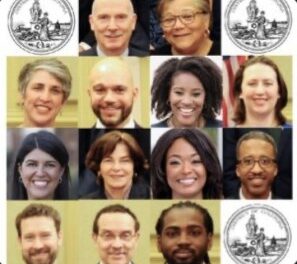By Megan Sayles
AFRO Business Writer
msayles@afro.com
The effects of climate change can be likened to a Russian doll, revealing layers of intertwined consequences as you explore the phenomenon.
On the surface, the planet faces rising temperatures and extreme weather events, but these side effects come with ramifications of their own— some of which further beget climate change. This can be seen in positive feedback loops.

“A positive feedback loop is where one process accelerates or exacerbates another. For instance, with climate warming in high-latitude ecosystems there is increased likelihood, frequency and intensity of wildfires,” said Carly Phillips, research scientist in the Science Hub for Climate Litigation for the Union of Concerned Scientists. “As a result of their burning, greenhouse gasses are released, exacerbating global warming, which drives the wildfires in the first place.”
According to the National Interagency Fire Center (NIFC), the U.S. experienced more than 56,500 wildfires in 2023, burning 3.6 million acres of land. Canada also notably had its worst wildfire season yet with smoke reaching a number of Northeastern and Midwestern states in the U.S.
The AFRO recently connected with Phillips to dive deeper into the implications of the burning.
What are some of the unforeseen impacts of wildfires?
While wildfires are present in folks’ minds, I think the subsequent impacts are not necessarily as well appreciated or understood. In high latitude areas, there is a huge amount of carbon stored particularly below the ground in organic matter and soil. It’s also in permafrost, which is lower down in the soil profile.
In these ecosystems, wildfires are burning increasingly larger areas at higher severity as the climate warms. When they burn, a lot of greenhouse gasses are released. There are air quality impacts that are really serious and widespread, but on top of that, the smoke and gasses that are released are a huge contribution to climate change, like carbon dioxide and methane.
There have also been several studies published over the past few years that point to increases in lightning strikes in Arctic ecosystems. We know that in Alaska, lightning has been a huge driver of these major fire seasons they’ve seen over the last 10 years or so. That can have major implications for wildfires and thawing permafrost which can intensify climate warming.
How are people affected by wildfires even if they do not live in the immediate vicinity of the burning?
Smoke is a big one. Families may have to keep their kids indoors for multiple days at a time because it isn’t safe for them to be outside. There are also consequences that result from accelerating climate change even though they may feel abstract.
As emissions from wildfires are exacerbating global warming, people are feeling rising temperatures, which lead to the heat waves that we’re all experiencing this summer. There’s a cascading effect from the exacerbation of climate change that can’t be understated.
How does the fossil fuel industry contribute to the risk of wildfires and other climate change impacts?
The evidence shows that the burning of fossil fuels and deforestation are indubitably the primary drivers of climate change and the increase of greenhouse gasses we see in the atmosphere. It’s not just the fossil fuels themselves but the fossil fuel industry that drives climate change through historical, ongoing deceptive practices. The industry has initiated campaigns to delay climate action and sow doubt about the veracity of climate science despite the incredible evidence that’s emerged over the past 20 years or so.
There have been advertisements that are disguised as editorial, which attack the science behind climate change. In some cases, they even attack the scientists themselves and their credibility.
We also know that internal research at some of these companies pointed to the risks of climate change really early on. However, instead of amplifying that information and warning about the dangers their products would cause, there was a concerted campaign to deceive the general public about what those risks were.
As wildfires intensify, what outcomes might we see in communities?
Wildfire smoke has been linked to things like increasing rates of asthma and lower birth weight. In California, we’re seeing insurers pull out of the market, and I think that’s related to wildfires escalating there.
We may also be faced with some hard choices about where we rebuild. There are people in communities who are very rooted in their sense of place, so what does it mean to lose that? I think that’s something the world is grappling with. How are folks navigating through losses and damages caused by wildfires and how are they being compensated not just in the U.S. but globally?
The post As wildfires intensify, climate change escalates appeared first on AFRO American Newspapers.











